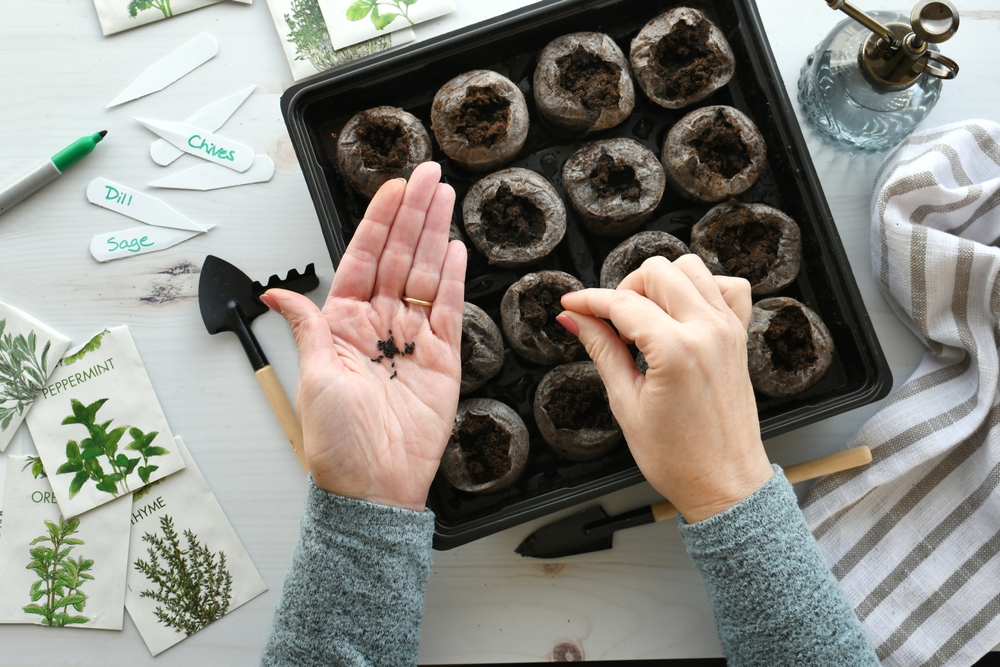Tips for Growing Flavorful Herbs
Herbs are relatively simple to grow; they’re so simple you could grow every single one you want in a pot on a windowsill or sheltered balcony. But if you have a nice yard or have managed to get a spot in a community garden and want to grow those herbs in the ground, you certainly can. The real trick is ensuring the herbs are flavorful, but even that isn’t too difficult to do.
Which Herbs Grow in Your Climate?
First, you need to find cultivars well-suited to your climate or region. If you try to grow cultivars meant for other regions, you’ll end up with very weak, flavorless plants because the conditions just aren’t right for them. Find seeds or cuttings meant to be grown in your area and your climate to give the herbs the best chances of developing a good flavor.
How to Prepare the Soil for Best Results
Before considering soil requirements, remember: The specific herbs you want to grow may need to be in containers instead. For example, mint is aggressive and considered invasive. It will outcompete any plant near it for food and water in the soil, and those plants will end up weak and flavorless. You could grow mint in the ground, but you may want to make things easy on yourself and grow that in a container.
All soil needs to be well-draining, so you may need to amend any clay or dense soil. It’s fine if the soil is a bit rocky, although you’ll want to be careful when digging. Test the soil and amend if the pH is lower or higher than about 6.0 to 7.5. Growing in soil that’s too acidic will produce poor-tasting herbs.
What’s the Best Way to Water Herbs?
Each herb will have its own requirements, but in general, herbs planted in the ground may need water only when the weather has been dry for a while. Water them in the morning when it’s cool outside to ensure the soil doesn’t become bone-dry. If you can set up drip irrigation, it will help deliver water to the roots instead of falling on the leaves and evaporating. If you grow any annuals, you may need to fertilize them because they have a faster and shorter growing season than perennials.
What Are the Sunlight and Temperature Requirements?
Herbs do well in full sunlight, but they have to be sheltered from the wind. Some cultivars may be OK with partial shade. Again, each herb varies in temperature, but you don’t want to leave them in very cold or very hot temperatures. Plant them after the last frost in spring and when temperatures are above 50 degrees F or so. But always check the instructions on the seed packets for the specific herbs you want to grow.
How to Prune and Harvest the Herbs
While many TV shows have people ripping leaves off plants when cooking, you’ll want to be a bit kinder to your plants. Prune and remove parts for use with clean, sharp shears. Each herb has its requirements regarding where on the stem to cut, but start doing so when the plant is mature enough to cut. Never let herb plants grow out of control; you’ll only have weaker plants. Snip off leaves and stems regularly, and ensure the plant has plenty of space for air to flow between branches and stems. That helps avoid fungal infection. A healthy herb plant is more likely to taste very good.
What About Companion Planting?
Several herbs can be planted close together to help each other grow, while others need to be kept apart. For example, don’t plant sage with chives because the watering requirements differ.
A Look at Organic Pest Control Methods
Many herbs function as insect repellents themselves, such as catmint or chives. If you’re looking for more general organic pest control for an infestation, neem oil, and diatomaceous earth are helpful, depending on the type of pest you’re dealing with. However, don’t apply pesticides pre-emptively. Monitor the herbs carefully and apply pesticides if you see trouble.
Pari Livermore has been a longtime supporter of community gardens in the Bay Area. If your neighborhood is interested in creating community gardens, contact Pari Livermore for information about where to start.
